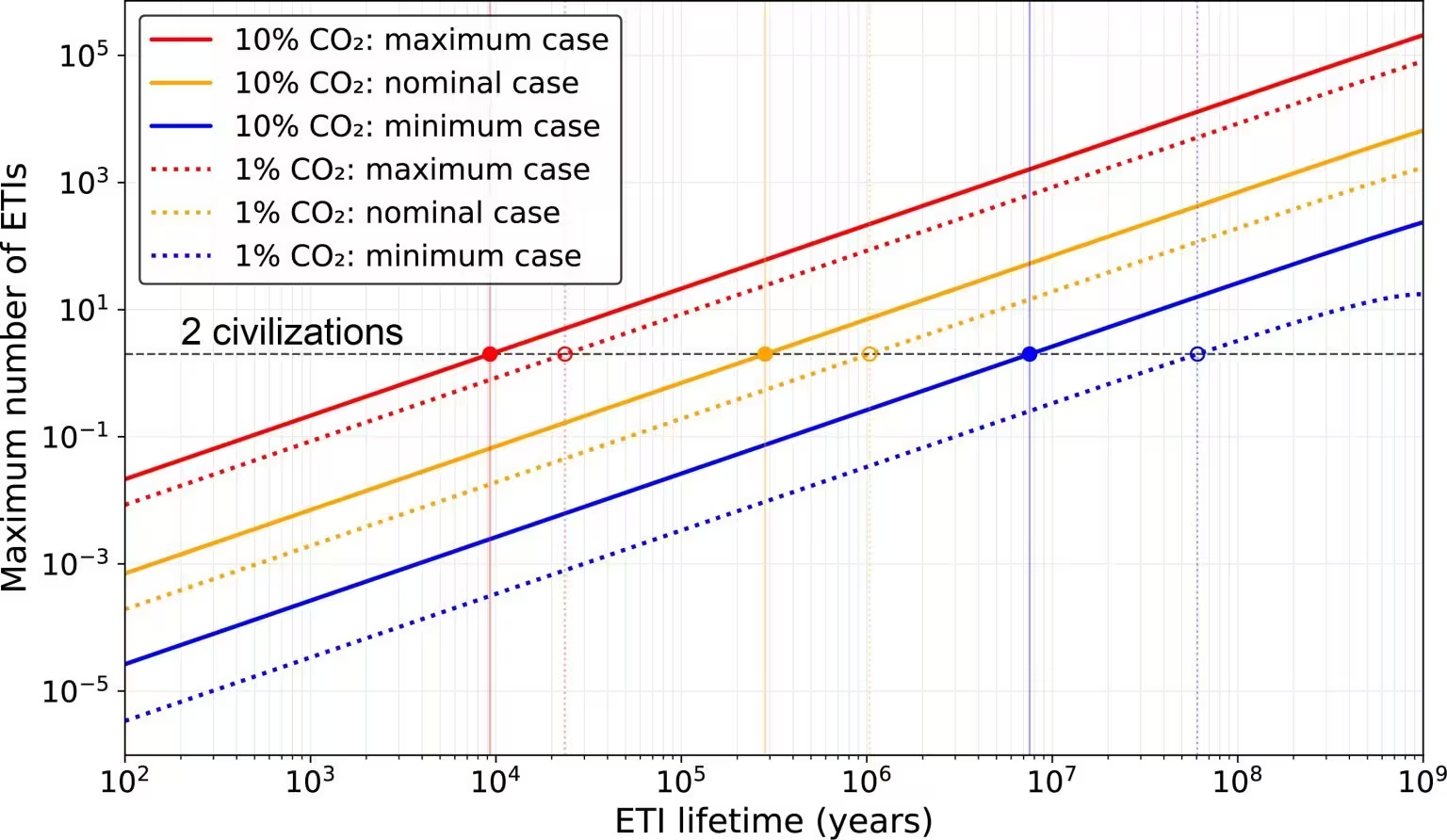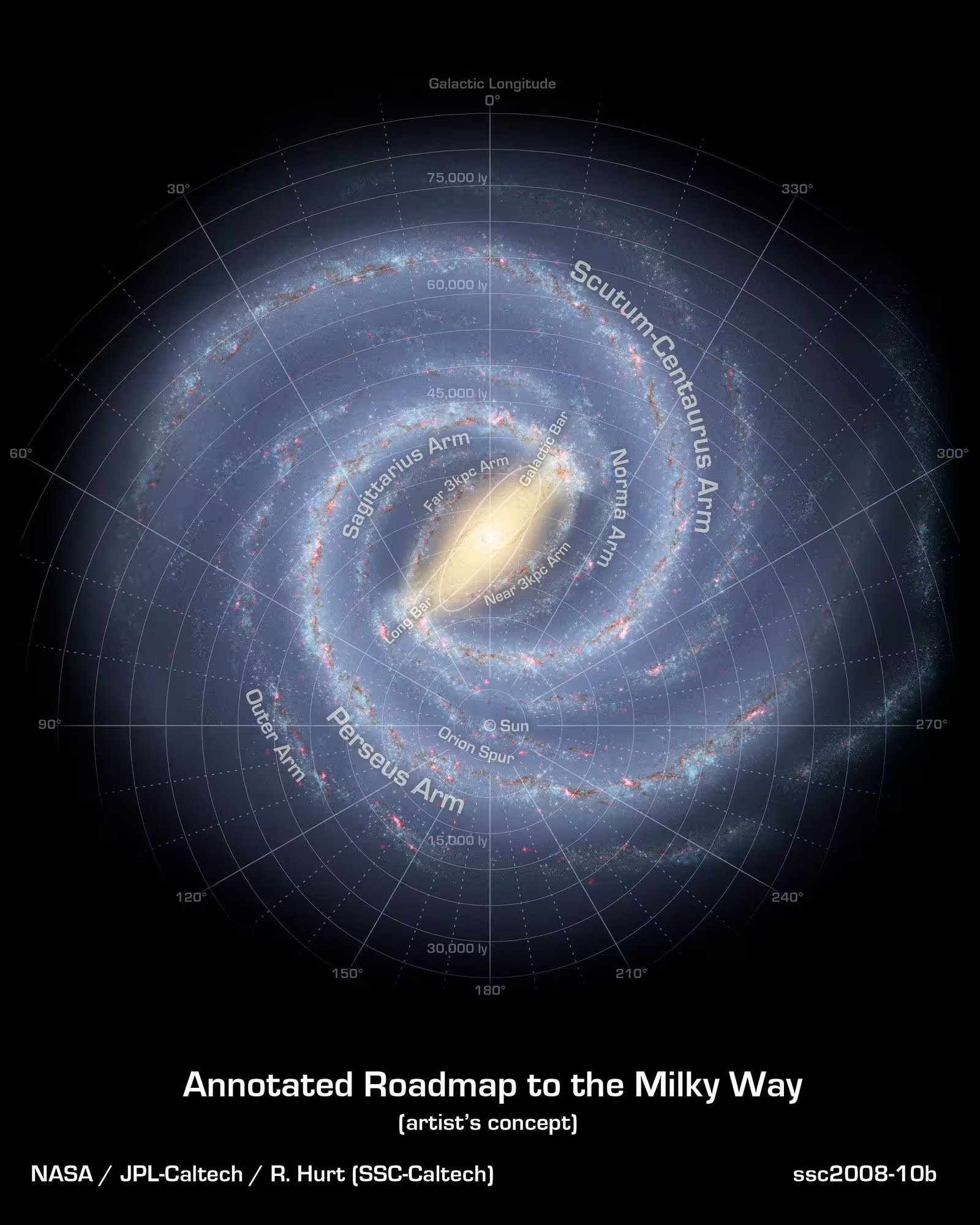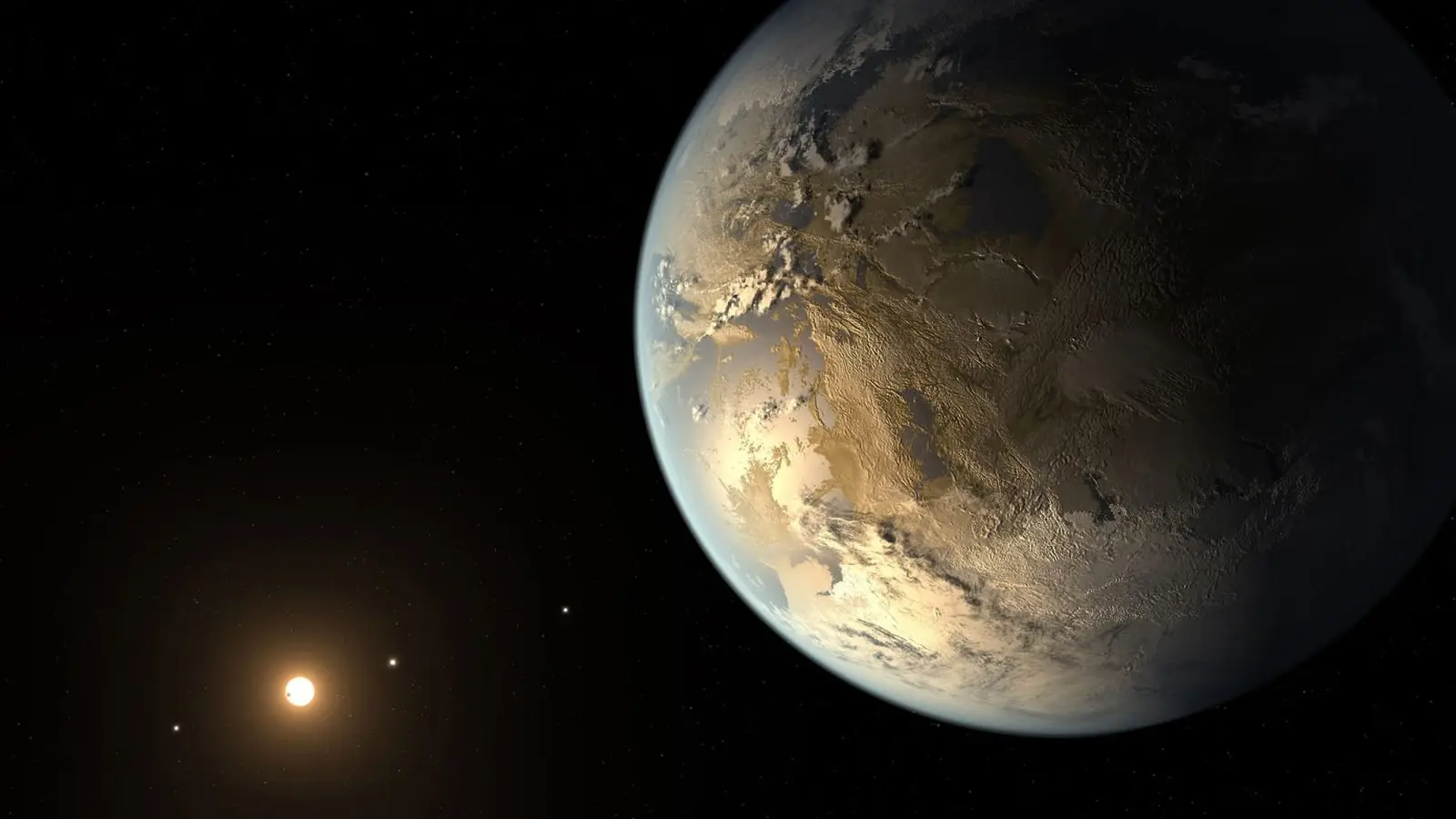7 Minutes
New study sets heavy odds against nearby intelligent life
An analysis presented at the EPSC–DPS2025 Joint Meeting in Helsinki concludes that technological civilizations in the Milky Way may be extremely sparse. Using models that combine planetary atmospheres, long-term climate regulation and the timescales required for intelligence and technology to arise, researchers Dr. Manuel Scherf and Professor Helmut Lammer (Space Research Institute, Austrian Academy of Sciences, Graz) estimate that the nearest contemporaneous technological civilization could be roughly 33,000 light-years from Earth.
The study does not claim absolute proof of loneliness; rather, it identifies the tight set of planetary and temporal conditions required for a species to evolve advanced technology and be detectable at the same time as humanity. Those constraints dramatically reduce the expected number of detectable extraterrestrial intelligences (ETIs) and push the nearest likely candidates to great distances across the galaxy.
Carbon dioxide balance, plate tectonics and habitable lifetimes
One of the core findings relates to atmospheric carbon dioxide (CO2) and the role of plate tectonics in regulating long-term habitability. The carbon–silicate cycle, mediated by plate tectonics, slowly removes CO2 from the atmosphere by locking it into rocks; volcanic outgassing then recycles some of that carbon back into the air. This balance determines how long a planet can sustain photosynthesis and an oxygen-producing biosphere.

This graph shows the maximum number of ETIs presently existing in the Milky Way. The solid orange line describes the scenario of planets with nitrogen–oxygen atmospheres with 10 per cent carbon dioxide. In this case the average lifetime of a civilization must be at least 280,000 years for a second civilization to exist in the Milky Way. Changing the amount of atmospheric carbon dioxide produces different results. Credit: Manuel Scherf and Helmut Lammer
Too little CO2 eventually starves photosynthesis and ends oxygen production; too much leads to greenhouse conditions or toxic atmospheres. The authors model scenarios where planets have high CO2 fractions—values orders of magnitude greater than modern Earth’s trace levels. For example, a nitrogen–oxygen atmosphere with 10% CO2 could, under specific planetary and stellar conditions, sustain a biosphere for roughly 4.2 billion years. By contrast, an atmosphere with 1% CO2 might support a biosphere for up to ~3.1 billion years. These lifetimes depend strongly on stellar luminosity, orbital distance and tectonic activity.
Plate tectonics appears essential: without it the long-term regulation of CO2 is compromised and habitable windows are either short-lived or highly unstable. The paper also argues that significant oxygen levels—estimated at no less than about 18% by volume—are probably required to enable technologies that depend on combustion and high-temperature metallurgy. Below that threshold, fire-driven smelting and other processes central to our technological development would be implausible.
From biosphere duration to civilization numbers
Scherf and Lammer link these planetary lifetimes to the statistical chance that two technological species coexist. On Earth, complex life and technological civilization emerged over a timescale of roughly 4.5 billion years. For another species to overlap with humanity, its planet must host a biosphere for long enough to allow intelligence and technology to evolve—and then that civilization must persist long enough to be contemporaneous with us.
In the paper’s representative scenario (10% atmospheric CO2), the median civilization lifetime required for even one other ETI to coexist with humanity is about 280,000 years. To have ten simultaneous civilizations in the Milky Way would require average lifetimes exceeding ~10 million years. Because these longevity figures are so large compared with human recorded history, the expected number of coexisting ETIs is low, and the nearest likely ones are rare and widely separated.

An artist’s impression of our Milky Way Galaxy, showing the location of the Sun. Our Solar System is about 27,000 light-years from the centre of the galaxy. The nearest technological species could be 33,000 light-years away. Credit: NASA/JPL–Caltech/R. Hurt (SSC–Caltech)
Combining these probabilities with the galaxy’s stellar distribution yields the 33,000-light-year distance estimate: our Sun lies about 27,000 light-years from the galactic center, so many plausible ETIs would be located on the opposite side of the Milky Way. The authors emphasize that this is a statistical expectation rather than a direct detection.
Limitations and unquantified factors
The authors acknowledge multiple important unknowns that the model cannot yet quantify: the probability that life originates at all; the likelihood that life develops photosynthesis; the frequency of multicellular life; and the probability that intelligent organisms invent technology. If these factors are highly probable, ETIs could be more numerous than the model suggests. If they are rare, the galaxy may indeed be sparsely populated with technological civilizations.
The approach highlights how habitability is not simply about being in a star’s “habitable zone”; it also depends on planetary geology, long-term climate regulation, atmospheric chemistry, and the evolution of complex life over geological timescales.
Expert Insight
Dr. Priya Anand, an astrophysicist and science communicator, comments:
"This study elegantly connects planetary geophysics and atmospheric chemistry with the statistical problem of contemporaneous civilizations. It reminds us that detecting ETIs is not only a matter of building better telescopes or listening for radio signals; it also requires understanding how rare long-lived, technologically capable biospheres might be. Even a single confirmed detection would rewrite our perspective on life in the universe."
Implications for SETI and future searches
For the Search for Extraterrestrial Intelligence (SETI), the results are sobering but not discouraging. If technological civilizations are rare and distant, we must refine search strategies and broaden the kinds of technosignatures we seek. Traditional radio SETI remains valuable, but optical searches for pulsed lasers, infrared searches for waste-heat signatures, and surveys for atmospheric technosignatures (unusual gas ratios in exoplanet spectra) are increasingly important.
Ongoing and planned facilities—such as extremely large ground-based telescopes, the James Webb Space Telescope and future space observatories—will improve our ability to characterize exoplanet atmospheres and search for biosignatures and technosignatures. At the same time, wide-field radio arrays and targeted deep surveys can probe different regions of parameter space.
Scherf and Lammer echo this pragmatic view: continued investment in SETI and exoplanet characterization is the only way to test these statistical models. A null result would strengthen the constraints; a positive detection would be one of the most profound discoveries in science.
Conclusion
The new analysis presented at EPSC–DPS2025 frames the search for extraterrestrial intelligence in quantitative planetary terms: long-lived biospheres, maintained by plate tectonics and balanced CO2 levels, and sufficient oxygen to permit technological development, are rare combinations. Under realistic assumptions about these requirements and civilization lifetimes, the nearest technological civilization that exists at the same time as humanity could be tens of thousands of light-years away. The study highlights important targets for observational follow-up—planetary atmospheres, tectonic indicators and oxygen levels—and reinforces the scientific value of continuing diverse SETI strategies and detailed exoplanet science.
Source: scitechdaily


Leave a Comment